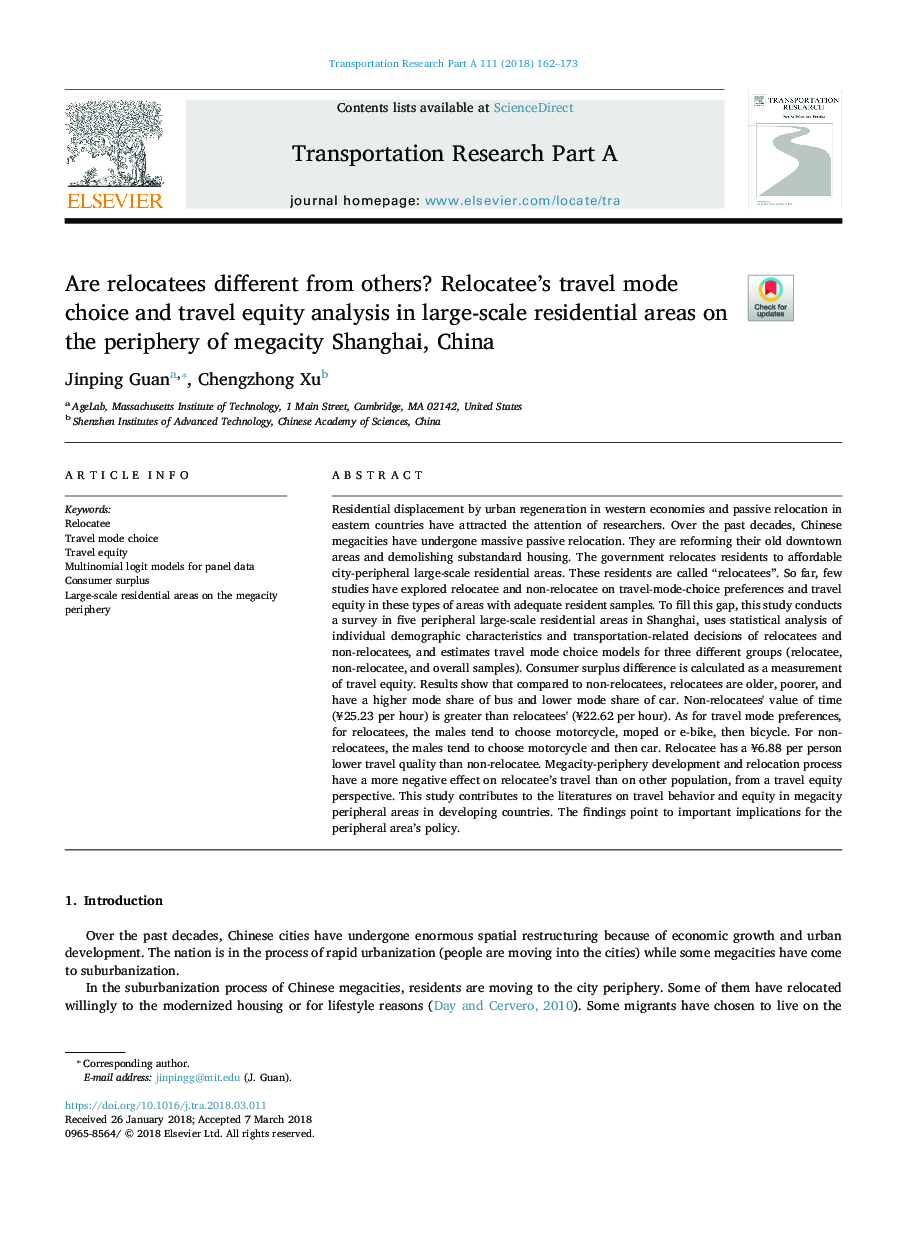| Article ID | Journal | Published Year | Pages | File Type |
|---|---|---|---|---|
| 6780266 | Transportation Research Part A: Policy and Practice | 2018 | 12 Pages |
Abstract
Residential displacement by urban regeneration in western economies and passive relocation in eastern countries have attracted the attention of researchers. Over the past decades, Chinese megacities have undergone massive passive relocation. They are reforming their old downtown areas and demolishing substandard housing. The government relocates residents to affordable city-peripheral large-scale residential areas. These residents are called “relocatees”. So far, few studies have explored relocatee and non-relocatee on travel-mode-choice preferences and travel equity in these types of areas with adequate resident samples. To fill this gap, this study conducts a survey in five peripheral large-scale residential areas in Shanghai, uses statistical analysis of individual demographic characteristics and transportation-related decisions of relocatees and non-relocatees, and estimates travel mode choice models for three different groups (relocatee, non-relocatee, and overall samples). Consumer surplus difference is calculated as a measurement of travel equity. Results show that compared to non-relocatees, relocatees are older, poorer, and have a higher mode share of bus and lower mode share of car. Non-relocatees' value of time (Â¥25.23 per hour) is greater than relocatees' (Â¥22.62 per hour). As for travel mode preferences, for relocatees, the males tend to choose motorcycle, moped or e-bike, then bicycle. For non-relocatees, the males tend to choose motorcycle and then car. Relocatee has a Â¥6.88 per person lower travel quality than non-relocatee. Megacity-periphery development and relocation process have a more negative effect on relocatee's travel than on other population, from a travel equity perspective. This study contributes to the literatures on travel behavior and equity in megacity peripheral areas in developing countries. The findings point to important implications for the peripheral area's policy.
Keywords
Related Topics
Physical Sciences and Engineering
Engineering
Civil and Structural Engineering
Authors
Jinping Guan, Chengzhong Xu,
